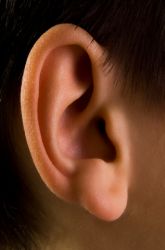Activity
Are the Growth Rates of Hair Different Between Men and Women?
Grade Level: 6th - 8th; Type: Life Science
Objective
In this experiment, we are going to find out whether hair grows the same rate between males and females.
Introduction
Hair is primarily composed of a protein called keratin. Because it is a protein, it grows quickly as do nails and our skin. You may not see it, but we shed hair and skin cells every day. This of course true for both men and women. But does their hair grow at the same rates? Let's find out. Note that this is an experiment that you will conduct over the course of the entire school year.
Research Questions
- How fast does men's hair typically grow?
- How fast does women's hair typically grow?
Terms to Know
- Hair
- Keratin
- Protein
- Filament
Materials
- Test subjects: At least 50 and 50 women
- Precision ruler
- Pen and paper for notes
Experimental Procedure
- Separate your test subjects according to gender.
- Take a precision ruler and measure the approximate longest strand of hair they have. Jot this down.
- Repeat step 2 in weekly intervals for the entire school year.
- At the end of the year, tally how much their hair grew between measurements.
- Find the average growth rate of the hair of men and the hair of women.
- Determine which sex had a faster growth.
Suggested Chart
|
Test Subject |
Week 1
|
Week 2
|
Week 3
|
|
#1
|
|
|
|
|
#2
|
|
|
|
|
#3
|
|
|
|
|
#4
|
|
|
|
Bibliography
- Wikipedia's Hair page
Disclaimer and Safety Precautions
Education.com provides the Science Fair Project Ideas for informational purposes only. Education.com does not make any guarantee or representation regarding the Science Fair Project Ideas and is not responsible or liable for any loss or damage, directly or indirectly, caused by your use of such information. By accessing the Science Fair Project Ideas, you waive and renounce any claims against Education.com that arise thereof. In addition, your access to Education.com's website and Science Fair Project Ideas is covered by Education.com's Privacy Policy and site Terms of Use, which include limitations on Education.com's liability.
Warning is hereby given that not all Project Ideas are appropriate for all individuals or in all circumstances. Implementation of any Science Project Idea should be undertaken only in appropriate settings and with appropriate parental or other supervision. Reading and following the safety precautions of all materials used in a project is the sole responsibility of each individual. For further information, consult your state's handbook of Science Safety.
Education.com provides the Science Fair Project Ideas for informational purposes only. Education.com does not make any guarantee or representation regarding the Science Fair Project Ideas and is not responsible or liable for any loss or damage, directly or indirectly, caused by your use of such information. By accessing the Science Fair Project Ideas, you waive and renounce any claims against Education.com that arise thereof. In addition, your access to Education.com's website and Science Fair Project Ideas is covered by Education.com's Privacy Policy and site Terms of Use, which include limitations on Education.com's liability.
Warning is hereby given that not all Project Ideas are appropriate for all individuals or in all circumstances. Implementation of any Science Project Idea should be undertaken only in appropriate settings and with appropriate parental or other supervision. Reading and following the safety precautions of all materials used in a project is the sole responsibility of each individual. For further information, consult your state's handbook of Science Safety.















